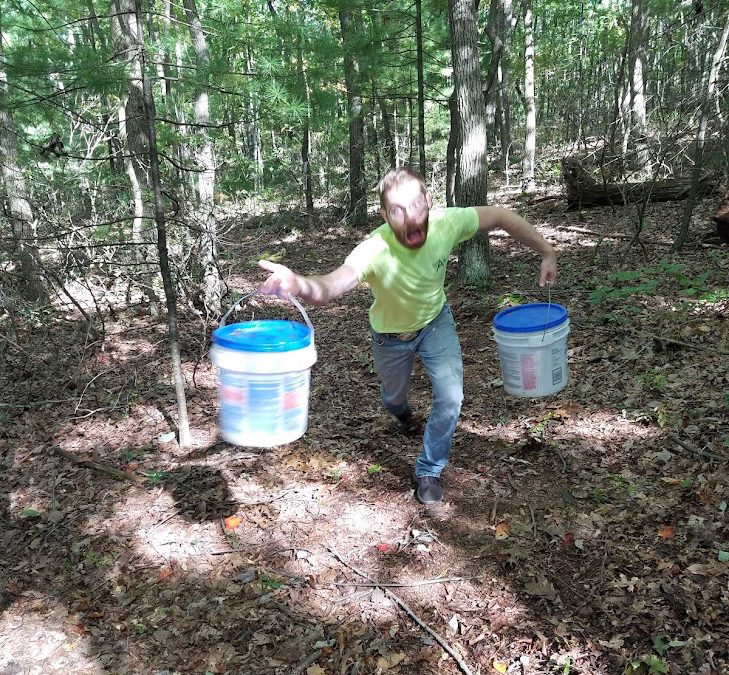
Prepping for Percolation
Dear Readers,
Holes were dug. Water was lugged. Our arms are now so sore and tired, we couldn’t even give a hug…
If anyone ever wondered what was involved in a soil and percolation test, that basically sums it up.
Even though we have no intention to install an on-site septic system (like a sand mound), the PA DEP has stated that for us to pursue an experimental permit (and have fun with our compost toileting and greywater reuse) we must first prove that a conventional system can be put in if need be. That means we must pass both a soil and a percolation test.
Soil Test
For those more interested in the technicalities, William and I first had to start with our SEO doing a soil test. If we passed the soil test, the SEO would then proceed to do a percolation test (colloquial term, “perc test”). The point of the soil test is to see if our soil is of a grade and quality that can effectively filter wastewater. The SEO needs to have multiple holes dug down to where “glacial till” can be found (the level in soil most undisturbed, and brought about by the movement of glaciers). These ‘holes’ (‘pits’, or even ‘trenches’ is more like it) had to be dug in an area near our home’s prospective location.
The adventure began with us figuring out how to dig (what I thought was supposed to be) three or four 4-5’ long and 10’ deep trenches for our soil test.
Yes, 10 feet deep trenches…plural…trenches. And what digs 10’ deep trenches? A backhoe. But, backhoes can be big. Very big. With a big footprint on our land and too big to fit through the 5 to 7-ish ft. wide (and 300 foot long…) path we currently have up to our home’s intended location and where this soil test needed to occur. So, what else can dig a 10’ deep trench that can fit through our small path? People.
And thus, with optimism in our hearts, naivety in our young brains, and a ladder standing by…we pulled up our sleeves and dug.
